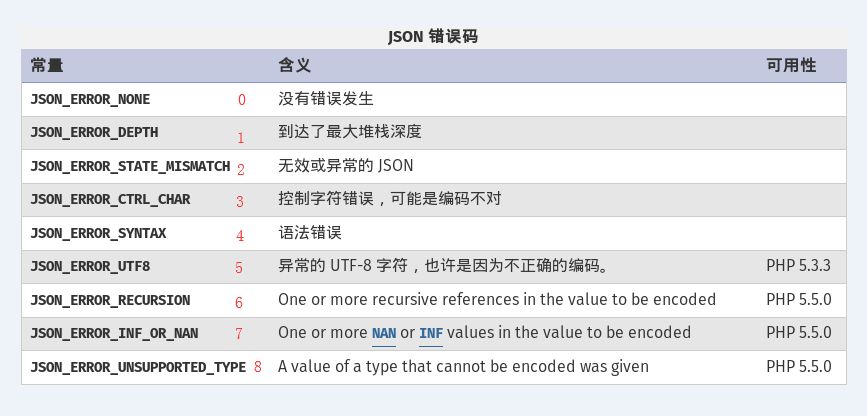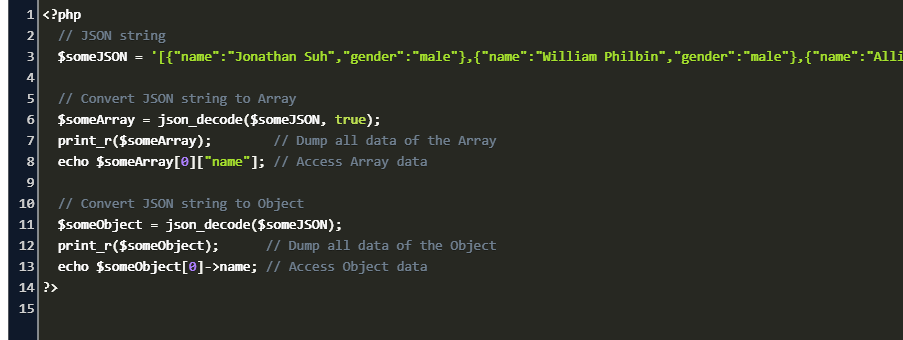

The NULL is returned if JSON can't be decoded or if the encoded data is deeper than the recursion limit. The values true, false, and null is returned as TRUE, FALSE, and NULL respectively.

PHP arrays are not supported by XML but can be converted into JSON. For the opposite transformation, use PHP jsondecode (). For example, a PHP object might be turned into JSON format file using PHP jsonencode () function. JSON can be handled by using inbuilt PHP functions. What we want to be able to do is add items to the opened collection and close the collection when done. The jsondecode () function can return a value encoded in JSON in appropriate PHP type. It is often used to read server data and output it in a webpage. Let's start with writing a JSON collection to a file using streams. To handle such large files in a memory-efficient way, we need to work with smaller chunks at a time. For now, we'll focus on storing those large collections of data in a JSON file and reading from it.įor our case, a JSON collection is a string containing a JSON array of objects (A LOT OF THEM), stored in a file. A common problem: you have a serialized PHP or JSON string, maybe even base64 encoded, but what you really want is an easy-to. This jsondecode() function of PHP takes JSON encoded string as input and returns the value that is decoded to PHP objects which of PHP data types and if the. I'll write in detail about the whole import process in another post. Since the uploaded CSV is expected to have tens or even hundreds of thousands of rows, all of the operations need to be done in a memory-efficient way, otherwise, the app would break from running out of memory.

assoc − It is the boolean type parameter when set to TRUE, returned, the objects will be converted into the associative arrays.Json_string − The encoded string must be the UTF-8 encoded data. The syntax of json_decode() function is following.
Php json decode example how to#
We will see how to decode or convert a JSON object to a PHP object.

Decoding JSON data is as simple as encoding it.


 0 kommentar(er)
0 kommentar(er)
